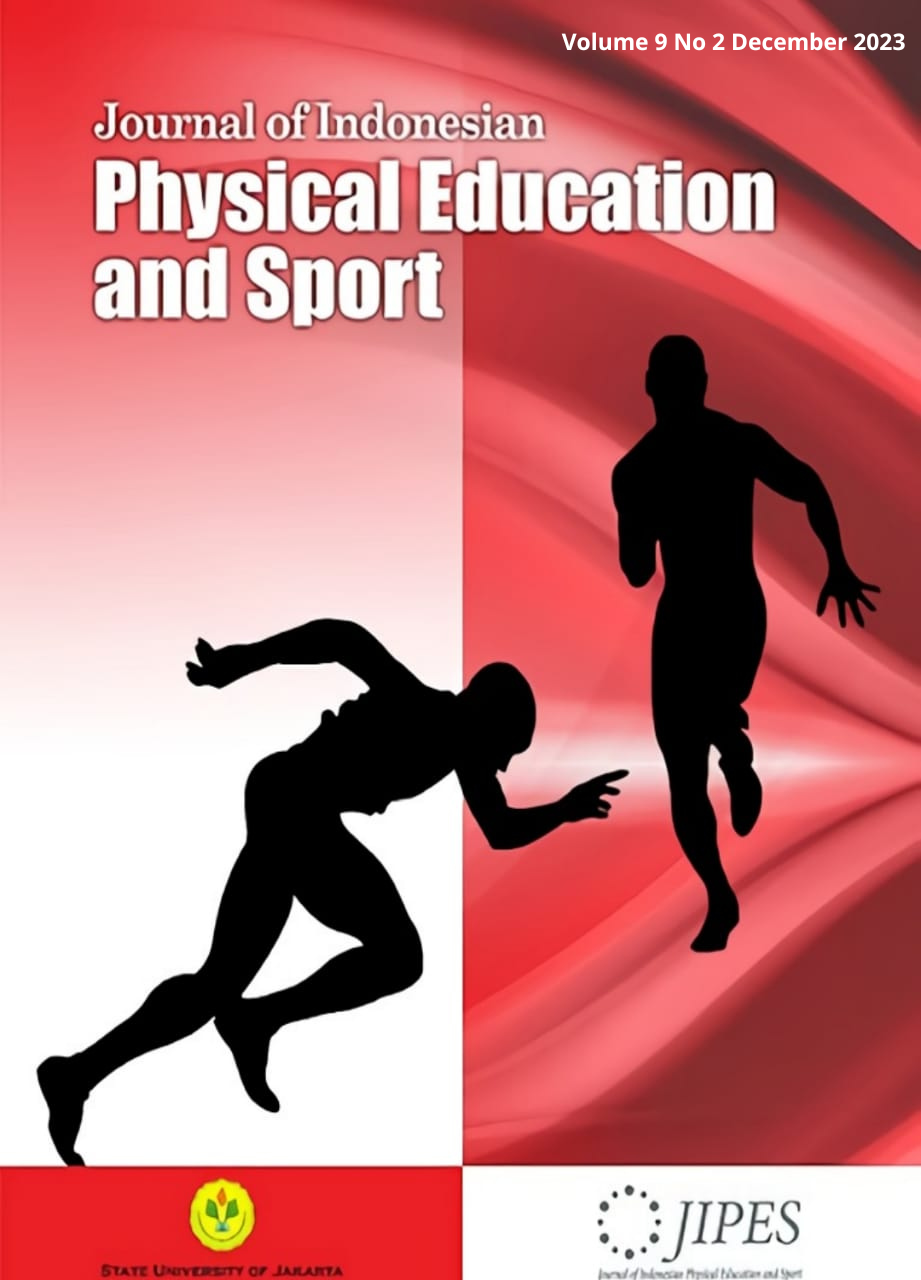The Effectiveness of Football Pass Learning Models Through the Peer Tutor
DOI:
https://doi.org/10.21009/JIPES.092.02Keywords:
Effectiveness; Learning Model; Passing Football; Peer TutorAbstract
The purpose of this study was to determine the effectiveness of the learning model that has been developed in football passing material. The learning model with the peer tutor approach is used as a form of variation in delivering learning material to students. Thirty-two Junior High School students in Palembang became the research object of the development of this learning model. This study was followed up with classroom action research to test the effectiveness of the learning model. The results showed that the greatest increase was in the cognitive domain, as well as student learning outcomes in football passing material above the minimum completeness value. These findings indicate that the learning model is proven to be effective in learning PJOK on football passing material for class VIII.
References
Dyson, B., Griffin, L. L., & Hastie, P. (2004). Sport education, tactical games, and cooperative learning: Theoretical and pedagogical considerations. Quest, 56(2), 226–240. https://doi.org/10.1080/00336297.2004.10491823
Friskawati, G. F. (2017). Optimalisasi Pemahaman Pembelajaran Penjas Melalui Model Pembelajaran Peer Teaching Menggunakan Media Audiovisual. Jurnal Menssana, 2(1), 1–9. https://doi.org/https://doi.org/10.24036/jm.v2i1.10
Gall, M. D., Borg, W. R., & Gall, J. P. (2003). Educational Research: An Introduction (7th ed.). Boston: Allyn & Bacon.
Habibie, M., Widiastuti, & Nuriani, S. (2019). Pengaruh Metode Latihan Dan Kordinasi Mata – Kaki Terhadap Keterampilan Shooting Dalam Sepakbola. Multilateral Jurnal Pendidikan Jasmani Dan Olahraga, 18(1), 25–31. https://doi.org/10.20527/multilateral.v18i1.6564
Hattie, J. A. C. (2009). Visible Learning: A Synthesis of Over 800 Meta-Analyses Relating to Achievement. New York: Routledge.
Jenkinson, K. A., Naughton, G., & Benson, A. C. (2014). Peer-assisted learning in school physical education, sport and physical activity programmes: A systematic review. Physical Education and Sport Pedagogy, Vol. 19, pp. 253–277. Routledge. https://doi.org/10.1080/17408989.2012.754004
Metzler, M. W. (2011). Instructional Models for Physical Education (3rd ed.). New York: Routledge.
Mirzeoglu, A. D. (2014). The Effects of Peer Teaching on the University Students’ Achievements in Cognitive, Affective, Psychomotor Domains and Game Performances in Volleyball Courses. Educational Research and Reviews, 9(9), 262–271.
Nurmi, A.-M., & Kokkonen, M. (2015). Peers as Teachers in Physical Education Hip Hop Classes in Finnish High School. Journal of Education and Training Studies, 3(3), 23–32. https://doi.org/10.11114/jets.v3i3.659
Pujianto, D., Sutisyana, A., & Arwin. (2020). Pengembangan Model Latihan Sasaran Berbasis Permainan Untuk Meningkatkan Kemampuan Passing Sepakbola. Multilateral: Jurnal Pendidikan Jasmani Dan Olahraga, 19(1), 67–73. https://doi.org/10.20527/multilateral.v19i1.8333
Rizky, O. B., Samsudin, & Siregar, N. M. (2019). Penerapan Metode Permainan Modifikasi Untuk. Multilateral: Jurnal Pendidikan Jasmani Dan Olahraga, 18(1), 1–9. https://doi.org/10.20527/multilateral.v18i1.6561
Song, Y., Harvey, S., & Smith, M. (2016). Physical Activity and Lesson Context Relationships in Tactical Games Lessons. Research Quarterly for Exercise and Sport, 87(S2), A75.
Stigmar, M. (2016). Peer-to-peer Teaching in Higher Education: A Critical Literature Review. Mentoring and Tutoring: Partnership in Learning, 24(2), 124–136. https://doi.org/10.1080/13611267.2016.1178963










 </a > a
</a > a 